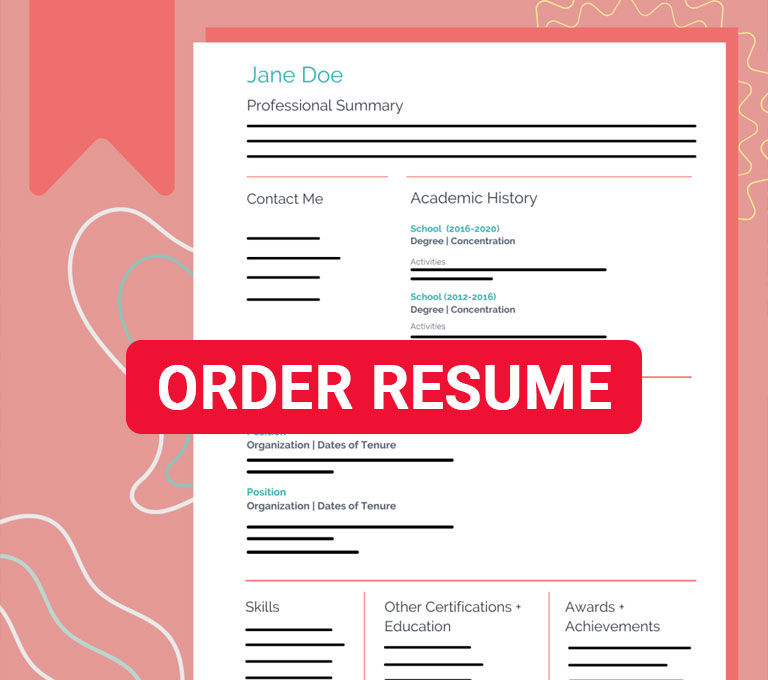Chronological curriculum vitae
When you decide to compile your curriculum vitae, the first obstacle to face is certainly the type of document you want to create. There are different types of CVs, certainly the chronological one is the most famous and used. In this article, we explain how to compile a perfect chronological resume that works.
What is meant by chronological resume
The chronological resume is a straightforward and simple way to organize their professional information: all information is in fact presented in an orderly manner, from the oldest to the newest in the classic chronological order and from the newest to the oldest in the reverse chronological CV.

A chronological curriculum classifies the information in the same way they are classified by our mind, becoming an easy reference tool for those who have to read it. It differs from the functional curriculum which in turn is used to highlight one’s competences and skills and not necessarily one’s work experience.
When and why to choose a chronological CV format
By its nature, the chronological CV lends itself very well to all those candidates who want to highlight their experiences in a structured way and skills. It is particularly suitable for those who do not have many active experiences, for example students and those who have had few occupations, precisely because of its versatility and the fact that information is usually entered in a chronological CV in this order: Personal Information , Personal Profile, Education and finally Work Experience. The order helps to locate the candidate’s position, making her path obvious.
Despite this characteristic, a chronological CV cannot however be filled with information: before drafting it, a skimming must be made between the information to be provided and those to be omitted because they are not pertinent, in order to avoid a document that is too long and excessive.
The advantages of a chronologically ordered resume
A chronologically ordered resume has several advantages, including:
- It allows you to demonstrate your professional growth, if is constant and has no relevant holes (unless justified);
- Allows you to sort all your skills and experiences in a correct and easy to read way;
- Guarantees that all acquired skills and experiences can be inserted in a detailed and specific manner.
Disadvantages of a chronologically ordered resume
A chronologically ordered CV also has some disadvantages, including:
- It could highlight unstable career progressions, both in terms of experience and competence;
- It may be too schematic, therefore not suitable for those applying for a creative position;
- It can become too anonymous precisely because of its extreme schematics.
The choice of the chronological curriculum is personal and must meet the needs of the candidate and the position for which one is applying. In all cases, it is always good to customize your CV based on the position you are applying for.
The key sections of a chronological resume
If you have opted for a chronological curriculum, you will necessarily have to enter the following sections within which the information must in turn be entered in chronological order from the oldest to the newest.
What are the sections that cannot be missing in a chronological resume? The sections that absolutely cannot be missing in the CV, and that must be inserted in this order, are:
Personal information: essential for introducing yourself and give recruiters a first impression of who you are.
Personal Profile: if well written, it is a great way to introduce yourself and highlight your goals.
Formative experiences: in a chronological curriculum the formative experiences are as important as the working ones and must be organized in a coherent way. Do not make the mistake of entering them all, but only those pertinent to the job position for which you are applying or that have had an impact in the definition of your professionalism;
Professional experiences: in a chronological resume, work experiences are fundamental and must always be dated correctly. Not only the position and the company should be entered but also and above all the date, so as to create a coherent section. If there are many positions to be entered, it is good to use a bulleted list to distinguish them;
The chronological curriculum for those looking for their first job
A chronological CV is also important for those looking for their first job: in fact, in the case of their first job search, this CV is useful to highlight all the school and training experiences matured up to that period The emphasis is entirely on studies and not on the work activities already carried out , and is therefore the ideal format for those looking for work for the first time but also for those with little experience.in this case, it is good to focus your attention on your education and training experiences, adding details on courses, internships and all that which has had an impact on their choices.
Other useful information for a chronologically ordered CV
Although it is easy to believe that the chronological order alone is enough to impress a company, in reality it is essential to understand that how for all types of CVs, it is also necessary that the chronology follows basic writing rules.
For example, it is always necessary to fully understand what is required in the job advertisement and in this way use words that a recruiter or even a recruiting software can recognize at a first reading.
It is also good to pay attention to formatting and length: a good CV is formatted in a simple way and without excessive elements and at the same mode is a maximum of 2 pages long, to prevent those who read it from getting bored and trashing it.

In summary
- A chronological CV allows you to organize information correctly and linearly ;
- In the chronological CV, it is good to insert all the information on your education and training, since this is the fundamental element;
- A chronological CV emphasizes the path of the candidates, with a particular emphasis on education;
- A chronological CV is useful for those with little experience;
- A chronological CV may be too anonymous for those working in creative fields.


